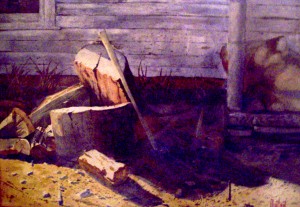When you observe a painting, your eyes just naturally go to the lightest area, but the painting becomes more interesting as you look within the dark areas, the shaded areas. The lights and shadows become a push-me pull-me competing with one another. If the artist manipulates this properly, it is entertaining, which is an artists true purpose; to entertain.
Light defines shadows, and without shadows light becomes an irritating brightness. There is no accuracy or dimension without shadows. Getting shadows correct is sometimes the most frustrating exercise an artist can endure. This takes a great deal of study. If you’re like me, it’ll probably take a lifetime.
Shadows can be subtle, and they can be stark. They can hide interesting things within them. They can be influenced by the hues adjacent to them (reflective shadows). They can be direct or mysterious. But, for sure, they can be very disappointing if not portrayed correctly.
Because of the painting at the bottom, I determined that I would become a student of shadows. I painted this painting thirty-two years ago with watercolors. This is a bad snapshot of a bad painting. The shadows are all wrong, and it being a watercolor, there was no way to correct this. It was a terrible disappointment for me but, in time, became very valuable. I’m still in the process, but I turned lemons into lemonade. I learned the importance of getting shadows accurate.

